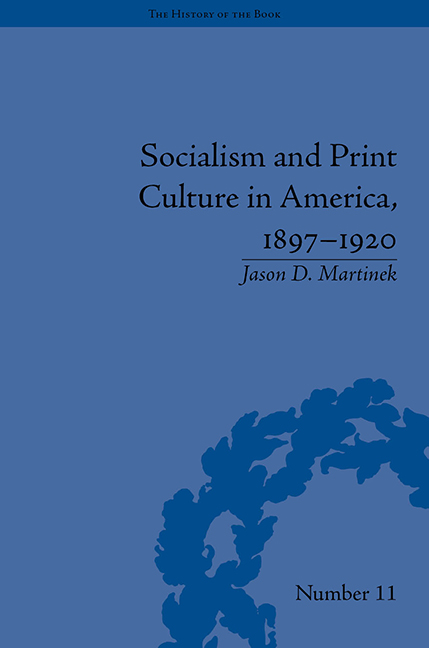Book contents
- Frontmatter
- CONTENTS
- List of Figures and Tables
- Acknowledgements
- Introduction: ‘Workers of the World, Read!’
- 1 ‘The Workingman's Bible’ and the Making of American Socialism
- 2 Charles H. Kerr & Company and the Americanization of Marxian Socialism
- 3 Activist Readers and American Socialists' Print Culture of Dissent
- 4 How the Socialist Party Created a Print Culture of Dissent without a Party-Owned Press
- 5 Information Management and the Socialist Party's Information Department and Research Bureau
- 6 Annotations on the Failure of Socialism in America
- 7 Conclusion: What a Book Cannot Do
- Notes
- Works Cited
- Index
4 - How the Socialist Party Created a Print Culture of Dissent without a Party-Owned Press
- Frontmatter
- CONTENTS
- List of Figures and Tables
- Acknowledgements
- Introduction: ‘Workers of the World, Read!’
- 1 ‘The Workingman's Bible’ and the Making of American Socialism
- 2 Charles H. Kerr & Company and the Americanization of Marxian Socialism
- 3 Activist Readers and American Socialists' Print Culture of Dissent
- 4 How the Socialist Party Created a Print Culture of Dissent without a Party-Owned Press
- 5 Information Management and the Socialist Party's Information Department and Research Bureau
- 6 Annotations on the Failure of Socialism in America
- 7 Conclusion: What a Book Cannot Do
- Notes
- Works Cited
- Index
Summary
The youngest editor of a socialist periodical in the early 1910s was just sixteen years old. His name was Marvin Sanford. He was the son of DeForest Sanford, who, himself, had a long career editing labour and socialist newspapers, including the Knights of Labor Advocate, People's Advocate and Whidby Islander, the last of which was the official newspaper of the Freeland Rochdale community in Puget Sound, Washington. In his typewritten, eight-page monthly, the younger Sanford saw his purpose as publishing for the ‘rising generation’. He called his monthly the Searchlight, and, like other socialist editors he truly believed that ‘education’ was ‘the way to liberty’. Sanford understood well that a vital press was arguably among a political organization's most important resources, a lesson he undoubtedly learned from his father. It would be a lesson that he would carry with him for the rest of his life as a union printer and avid collector of radical and labour ephemera.
I.
Before the advent of electronic media, there were few better ways of building a movement than through the press. Indeed, the press, then as now, provides a vital link between leaders and members. It serves as an invaluable recruiting tool. It is a powerful reinforcer of convictions, whether Whig, Democrat, abolitionist, Republican or socialist. It educates, informs and even entertains, all the while laying out the party line.
- Type
- Chapter
- Information
- Socialism and Print Culture in America, 1897–1920 , pp. 79 - 96Publisher: Pickering & ChattoFirst published in: 2014



